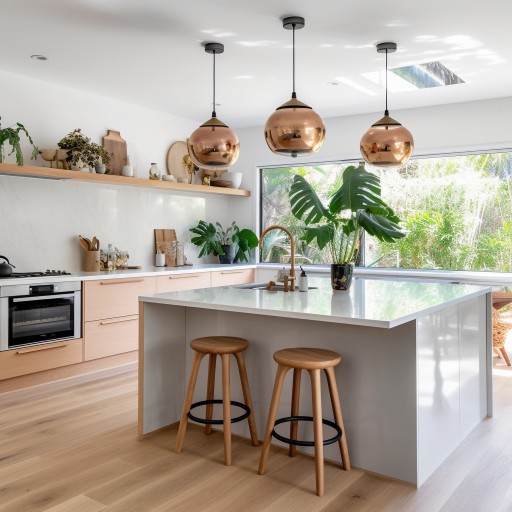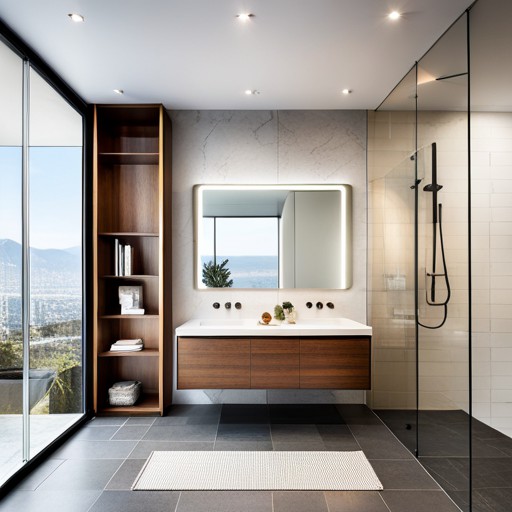How to Estimate Eco-Friendly Kitchen Remodeling Costs

co-founder
- Understanding Remodeling Costs: The Basics
- Communicating Your Vision: Essential Details for Your Contractor
- Going Green: The Eco-friendly Kitchen Remodel
- Project Planner: Your Remodeling Ally
- Selecting and Pricing Appliances for an Eco-Friendly Kitchen
- Refrigerator
- Dishwasher
- Cooktop/Oven
- Small Appliances
When considering a home renovation, the kitchen is often the first room that comes to mind. As the heart of the home, where meals are prepared, and family members congregate, it's no surprise that kitchen remodels offer a high return on investment. However, planning for a kitchen remodel can be overwhelming, especially when trying to calculate the costs.
You may have heard about $2000 per linear foot as a kitchen remodel estimate. While it's a pretty good estimate to provide a broad ballpark, the cost can significantly fluctuate based on many factors, including the materials used, labor costs, and the kitchen size. But don't fret - we're here to guide you through the process of estimating kitchen remodeling costs, with a particular focus on [eco-friendly upgrades](/articles/eco-friendly-and-sustainable-home-renovations].
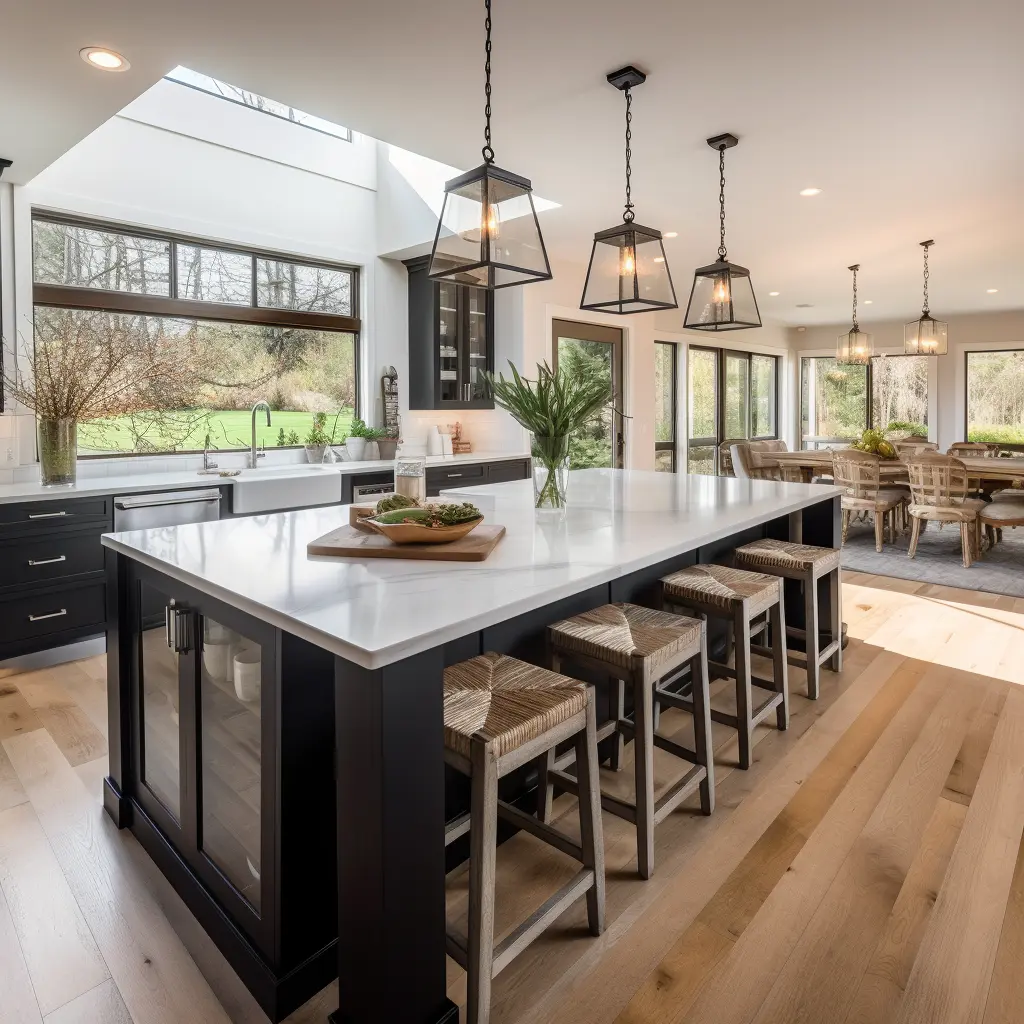
Understanding Remodeling Costs: The Basics
The first step in estimating kitchen remodeling costs involves understanding the primary cost factors:
Size: The size of your kitchen plays a critical role in estimating costs. Usually, costs are determined per square foot or per linear foot. That generally falls between $150 and $250 per square foot, but this can change dramatically depending on the level of finish, whether or not you need to move plumbing, walls, or electrical. Size is a major factor, but not the only one!
Materials: The choice of materials directly impacts the cost. For example, granite countertops are costlier than laminate ones. The materials you choose will directly impact the look and feel of your kitchen though, so take your time and find the things you love and can afford. It's worth getting organized and thinking about your remodel as a whole so that you can make smart tradeoffs if needed.
Labor: The cost of labor can vary based on your location and the complexity of the project. It's important to not skimp out and go with the cheapest bid you get. Do your homework and hire a kitchen remodeling team that will share your vision and help you bring it to life.
Communicating Your Vision: Essential Details for Your Contractor
In order to obtain an accurate estimate for your kitchen remodel, clear communication with your contractor is crucial. Here's what you should consider discussing:
Your Sustainability Goals
Your contractor needs to understand your vision for an eco-friendly, sustainable kitchen. This includes your desire for energy-efficient appliances, sustainable materials, low VOC paints, and other green building considerations. Explain why sustainability is important to you, and how you envision it playing out in your remodel. The more detail you provide, the better your contractor can align their plans with your goals.
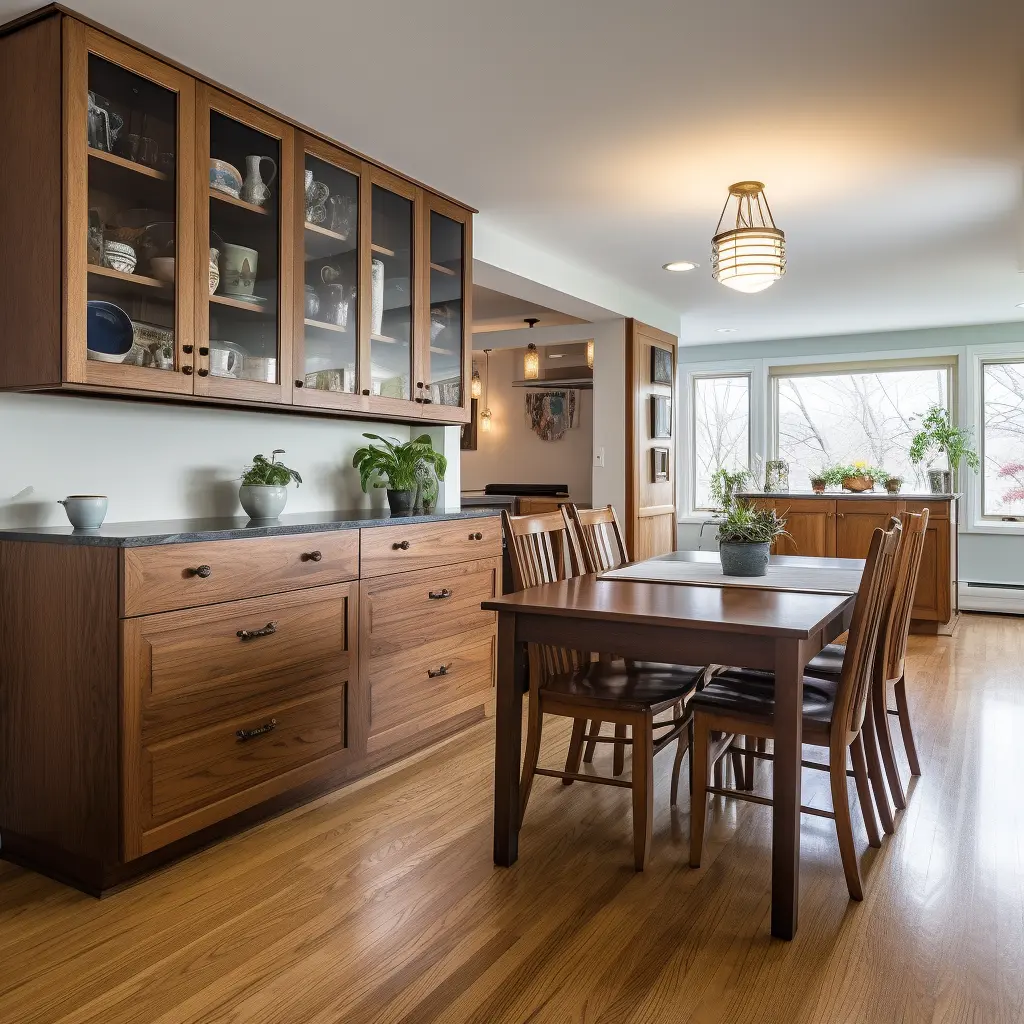
Storage Needs
A well-organized kitchen begins with ample and efficient storage. Discuss with your contractor about how much storage you think you'll need based on your kitchen habits. This could involve everything from pantry space to cabinetry for pots and pans. Don't forget to include any unique storage solutions you're interested in, such as a pull-out spice rack or built-in wine storage.
Kitchen Usage
Not every kitchen is used the same way. Some people love to cook daily, requiring more prep space and high-quality appliances. Others may use the kitchen more for socializing, needing an open concept design with comfortable seating. Share how you intend to use your kitchen so your contractor can design a space that fits your lifestyle.
Preferred Aesthetics
Lastly, don't forget to talk about your desired aesthetic for your kitchen remodel. Whether you're partial to a sleek, modern look or a cozy, country-style kitchen, communicating this to your contractor will ensure the final result is something you love. Think about what kitchen countertop surface will bring that vision to life. Do the same with your cabinets. Both of these will have a big impact in the final look of your new remodel.
Keep in mind that the more information you provide your contractor upfront, the more accurate their estimate will be. Don't be shy about expressing your desires and concerns - a good contractor will always be happy to work with you to achieve the kitchen of your dreams.
Going Green: The Eco-friendly Kitchen Remodel
Sustainable, eco-friendly upgrades are an excellent choice for kitchen remodeling. They not only contribute to a healthier environment but can also lead to significant energy savings in the long run. According to the U.S. Department of Energy, 15% of the average home's energy use occurs in the kitchen. By opting for energy-efficient appliances and sustainable materials, you can significantly reduce your home's overall energy consumption.
Contrary to popular belief, going green doesn't necessarily mean spending more. Many eco-friendly materials and appliances are competitively priced, and the energy savings they offer can offset the initial investment over time.
Project Planner: Your Remodeling Ally
Our project planner is an invaluable tool to help you get started with your kitchen remodel. It assists in figuring out your costs, setting a realistic budget, and even connects you with a vetted pro in your area. Through thoughtful planning and an emphasis on sustainability, your kitchen remodel can be both affordable and eco-friendly.
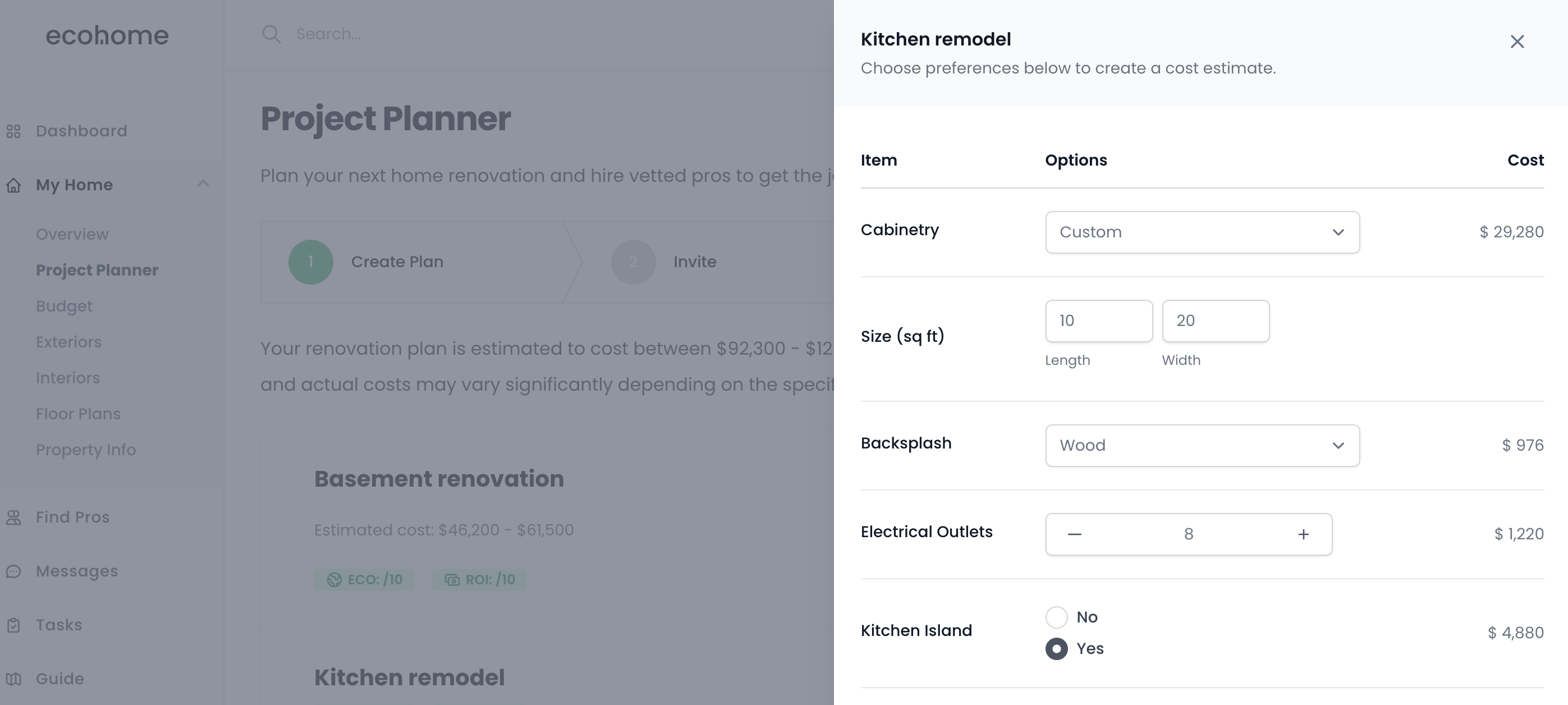
Selecting and Pricing Appliances for an Eco-Friendly Kitchen
Choosing the right appliances is a critical aspect of creating an eco-friendly kitchen. Not only can these selections help reduce your home's environmental footprint, but they can also significantly lower your energy bills. Here's what you should consider:
Energy Efficiency
The most important factor when selecting eco-friendly kitchen appliances is energy efficiency. Look for products that have an Energy Star label, which indicates the appliance meets or exceeds the Environmental Protection Agency's energy efficiency standards. These appliances use 10-50% less energy than standard models and can save you a considerable amount on your electricity bills.
Refrigerator
The refrigerator is one of the most energy-intensive appliances in the kitchen, operating 24/7. Choose a model with a high Energy Star rating. Also, consider its size – larger models consume more power, so select one that fits your needs without going overboard. Top or bottom freezer designs tend to be more energy-efficient than side-by-side models.
Dishwasher
A modern, energy-efficient dishwasher can use less water than washing dishes by hand. Look for models that offer light wash or eco modes, which use less water and energy. Also, consider the dishwasher's size. Compact models use less energy but if you're running multiple loads daily because it's too small, it might not be the best choice.
Cooktop/Oven
When it comes to ovens and cooktops, induction stoves are typically the most energy-efficient. They use electromagnetic fields to directly heat pots and pans, leading to less wasted heat. If gas is your preference, look for models with a high efficiency rating. For ovens, consider a convection oven that circulates hot air, reducing cooking times and saving energy.
Small Appliances
Don't forget about smaller appliances like microwaves, toasters, and coffee makers. These also come in Energy Star-rated versions. Some have auto-off features or eco modes for more efficient operation.
While energy-efficient appliances might have a higher upfront cost, they can save you money in the long run through lower utility bills. And more importantly, they're a great way to reduce your environmental impact and make your kitchen more eco-friendly.
At the end of the day, don't forget that your kitchen is more than just a cooking space – it's a hub of home energy, creativity, and comfort. Remodeling your kitchen with a focus on green building principles can significantly enhance your home's value, reduce energy consumption, and contribute to a sustainable future. So, get started today and transform your kitchen into a vibrant, eco-friendly space that echoes your values and lifestyle.
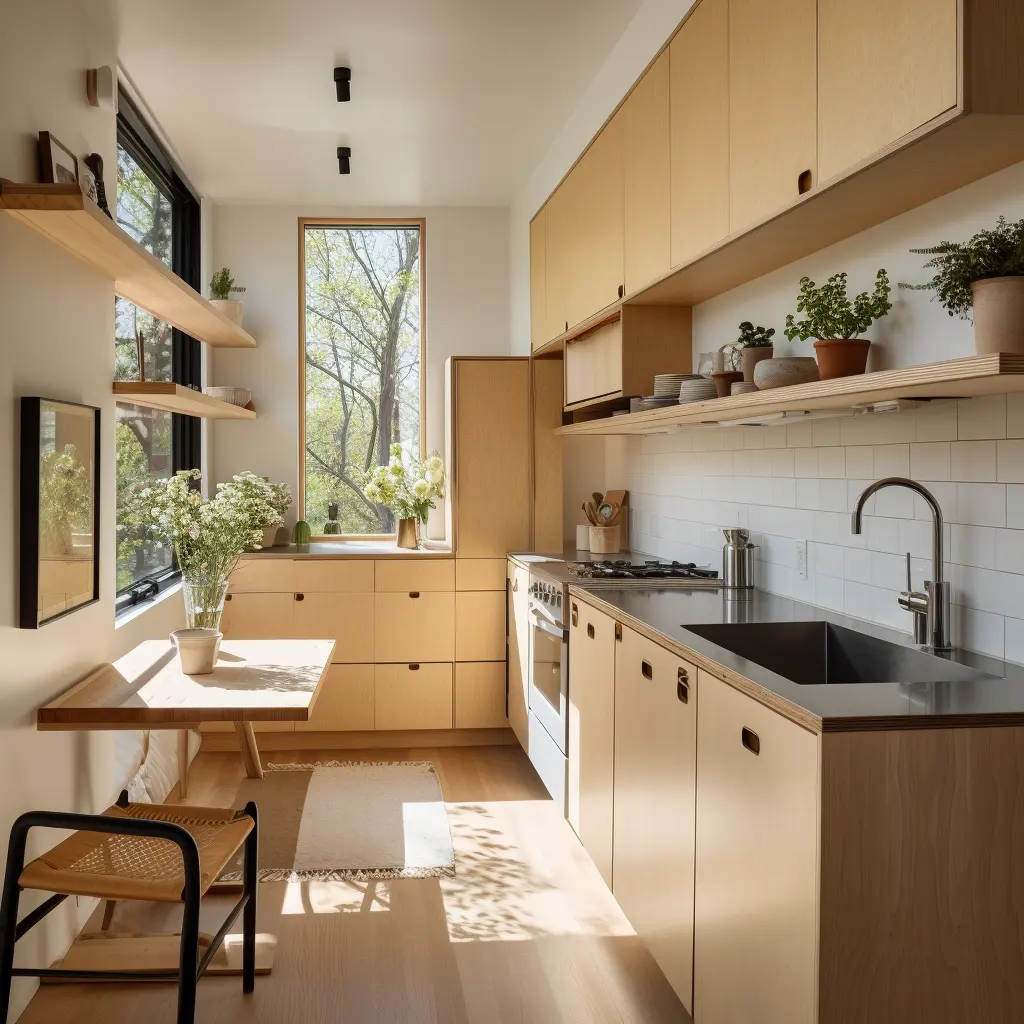
Renovate with EcoHome
EcoHome empowers homeowners to confidently build healthy and comfortable homes for a fair price.
Sign UpLocations View All →
NY
- Albany
- Binghamton
- Buffalo
- Esopus
- Freeport
- Hempstead
- Highland
- Kingston
- Long Beach
- Marlboro
- Mount Vernon
- New Paltz
- New Rochelle
- New York City
- Niagara Falls
- North Tonawanda
- Olivebridge
- Plattekill
- Rochester
- Rome
- Saugerties
- Schenectady
- Shandaken
- Syracuse
- Troy
- Utica
- Valley Stream
- Wallkill
- Woodstock
- Yonkers
NJ
- Bayonne
- Brick
- Camden
- Cherry Hill
- Clifton
- East Orange
- Edison
- Elizabeth
- Jersey City
- Lakewood
- Middletown
- Newark
- Old Bridge
- Passaic
- Paterson
- Toms River
- Trenton
- Union City
- Woodbridge
CT
PA
- Allentown
- Altoona
- Bethel Park
- Bethlehem
- Chester
- Easton
- Harrisburg
- Hazleton
- Lancaster
- Lebanon
- Monroeville
- Philadelphia
- Pittsburgh
- Reading
- Scranton
- Wayne
- Wilkes Barre
MD
- Abingdon
- Baltimore
- Bethesda
- Bowie
- Columbia
- Dundalk
- Ellicott City
- Frederick
- Gaithersburg
- Germantown
- Glen Burnie
- Potomac
- Rockville
- Severn
- Silver Spring
- Towson
- Waldorf

